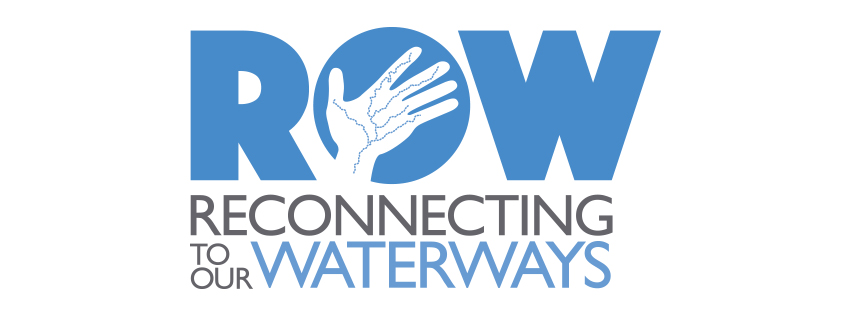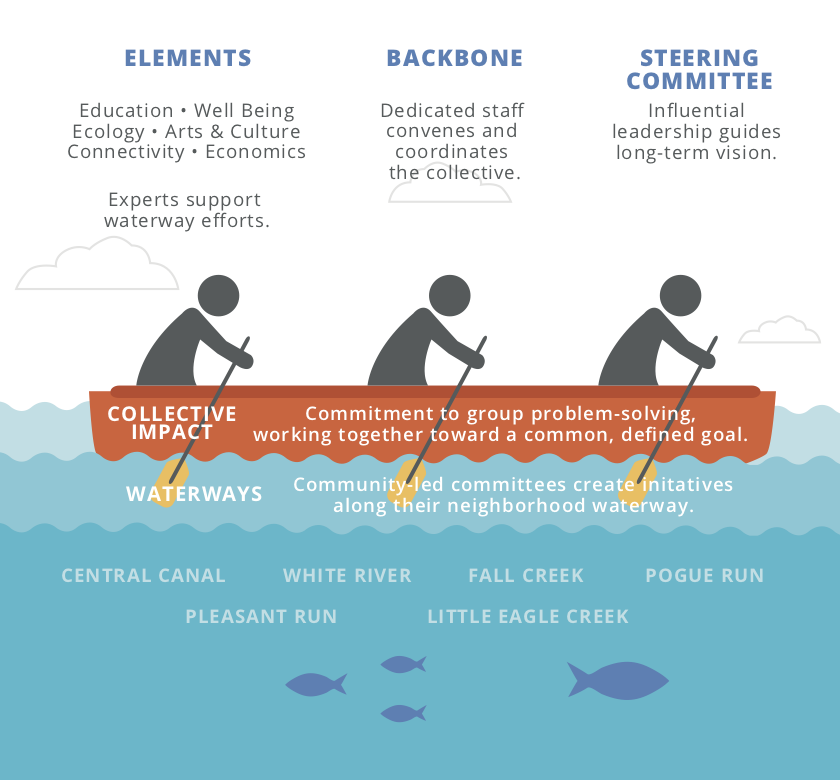Collective Impact
Reconnecting to Our Waterways (ROW) is an initiative of Indianapolis neighbrohoods and residents, private and public organizations, and civic leaders, and operates from a collective impact model.
What is a collective impact model? It is defined as “the commitment of a group of actors from different sectors… that coordinate their efforts and work together around a clearly defined goal.” The concept of collective impact hinges on the idea that in order for organizations to create lasting solutions to social problems on a large-scale, they need to coordinate their efforts and work together around a clearly defined goal.
As a “Collective Impact” grassroots initiative, ROW’s partners have committed to a common agenda. Collective Impact is more rigorous and specific than collaboration among organizations. There are five conditions that together, lead to meaningful results:
| Shared Vision: |
All participants have a shared vision for change, including a common understanding of the problem and a joint approach to solving it through agreed-upon actions
|
| Shared Measurement: | Collecting data and measuring results consistently across all participants ensures efforts remain aligned and participants hold each other accountable |
| Mutually Reinforcing Activities: |
Participant activities must be differentiated while still being coordinated through a mutually reinforcing plan of action
|
| Continuous Communication: |
Consistent and open communication is needed across the many players to build trust, assure mutual objectives, and appreciate a common motivation.
|
| Backbone Organization: | Creating and managing collective impact requires a separate organization(s) with staff and a specific set of skills to serve as the backbone for the entire initiative and coordinate participating organizations and agencies. |

